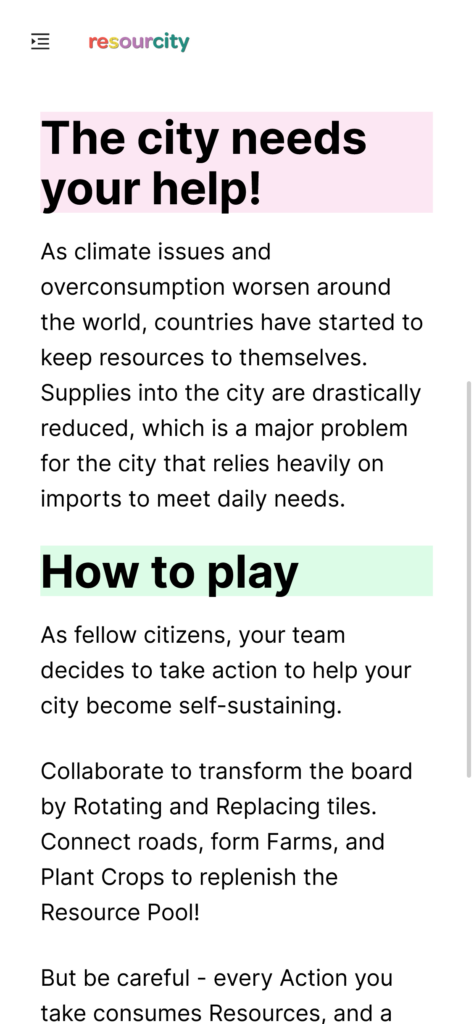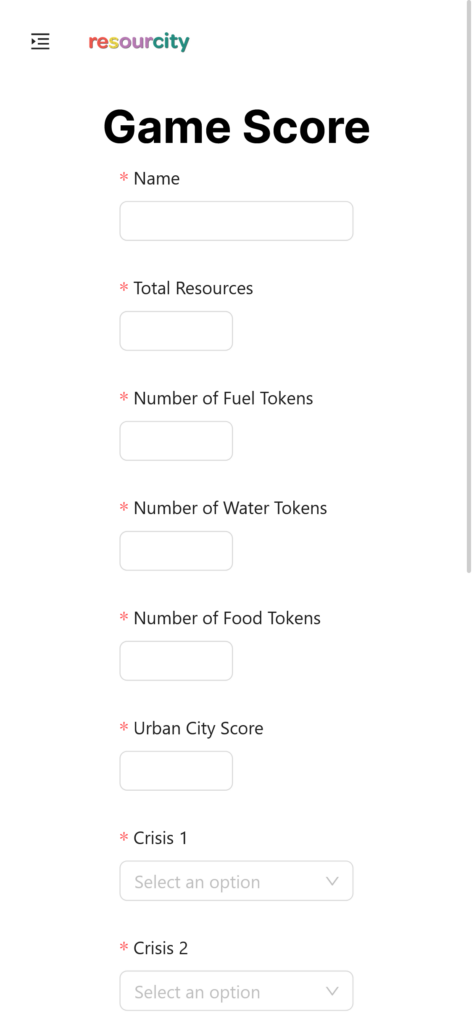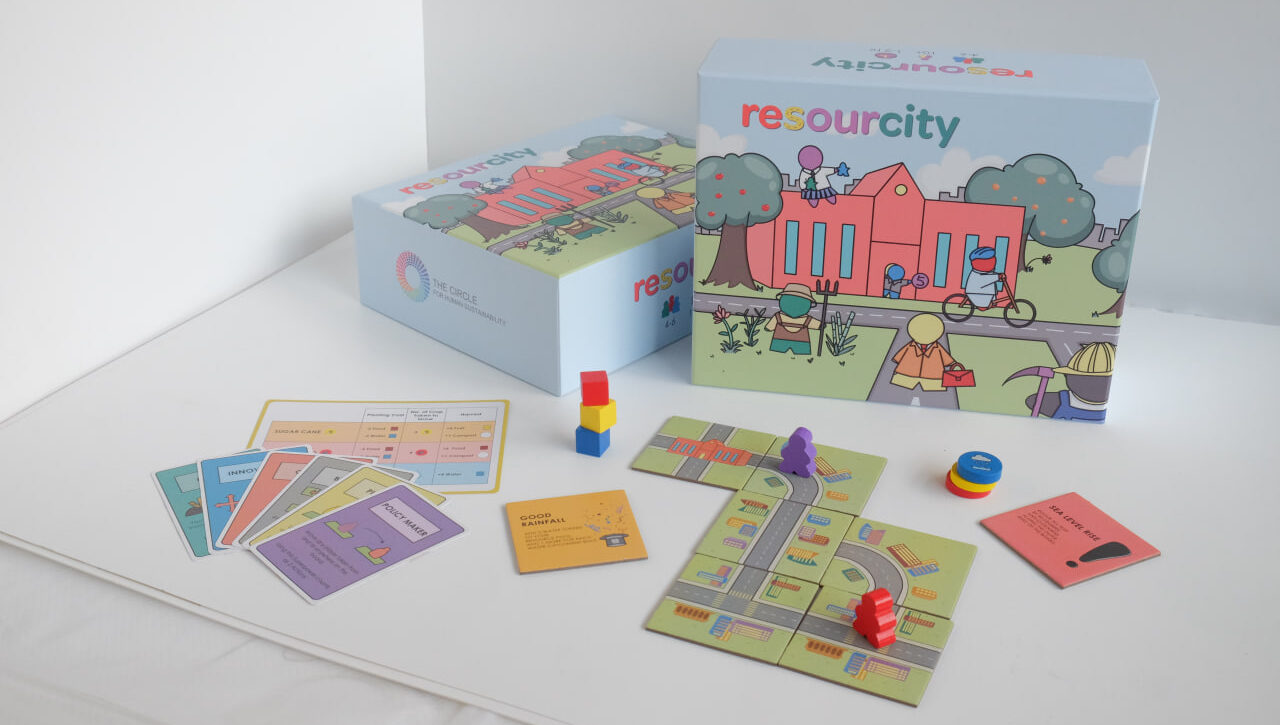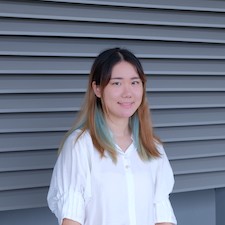Game Components
Game Components
The city is built with tiles, and each player has a superpower. Together, players learn to manage the resource tokens with farming. More information can be found in the Game Booklet, while key information is available on the Instruction Card.



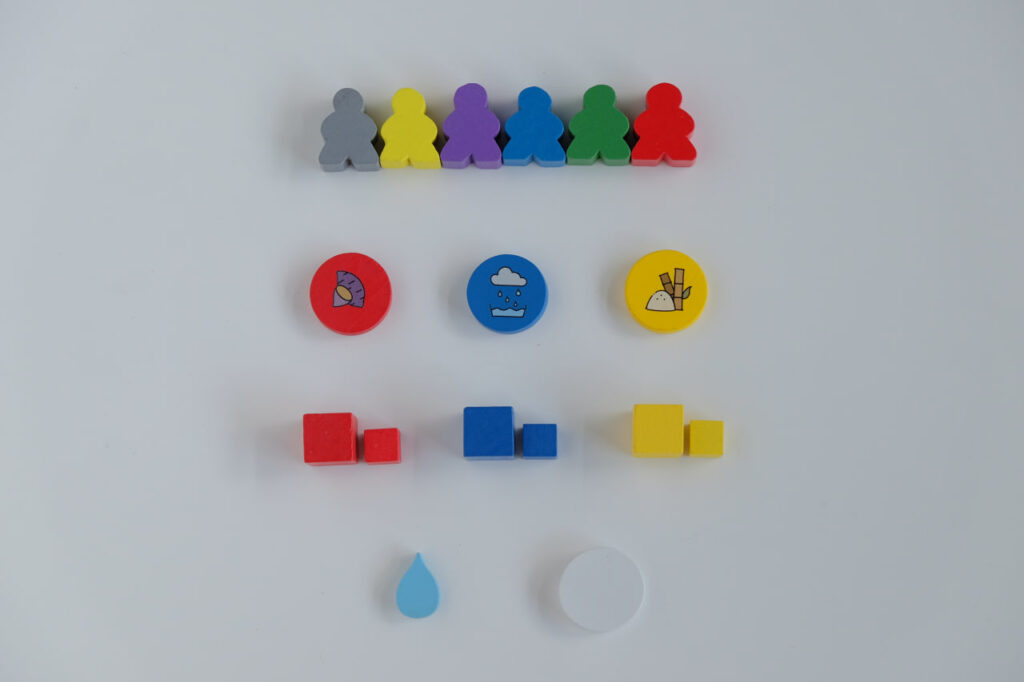


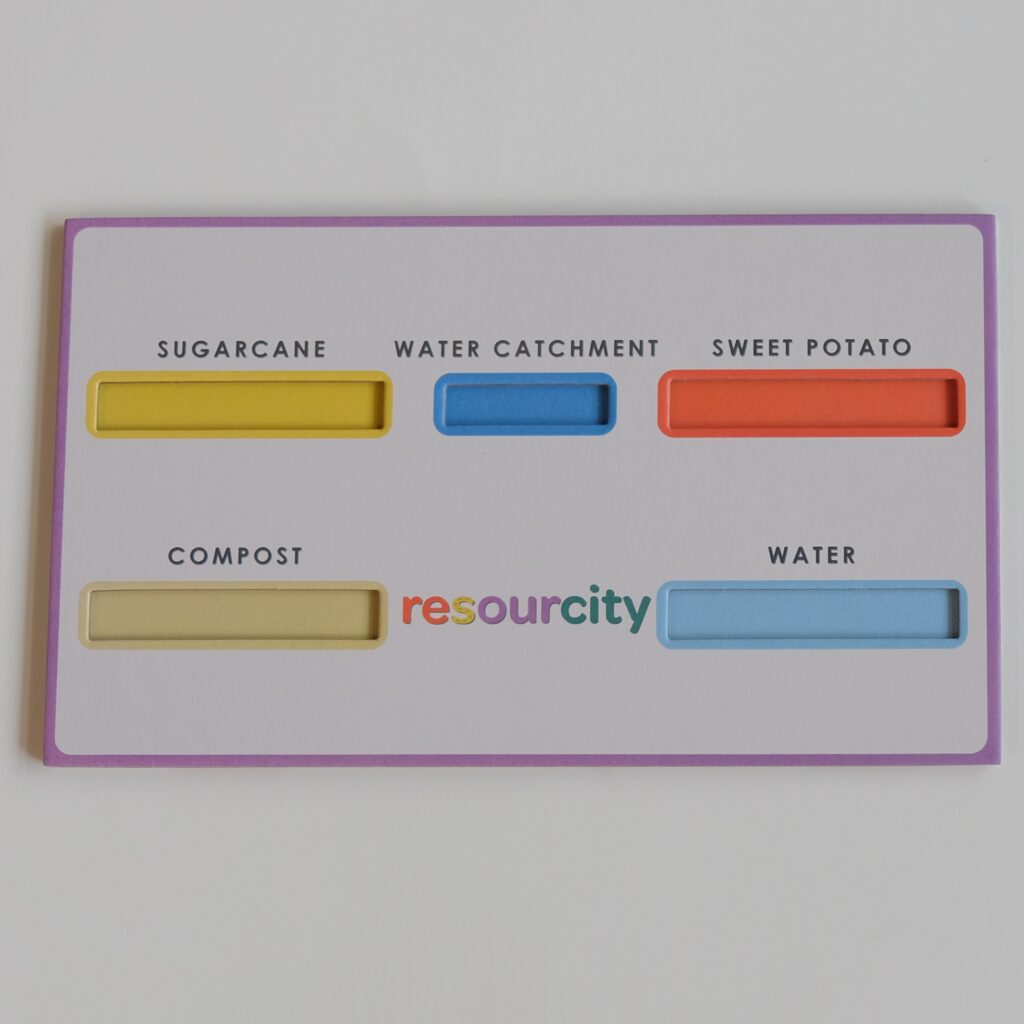

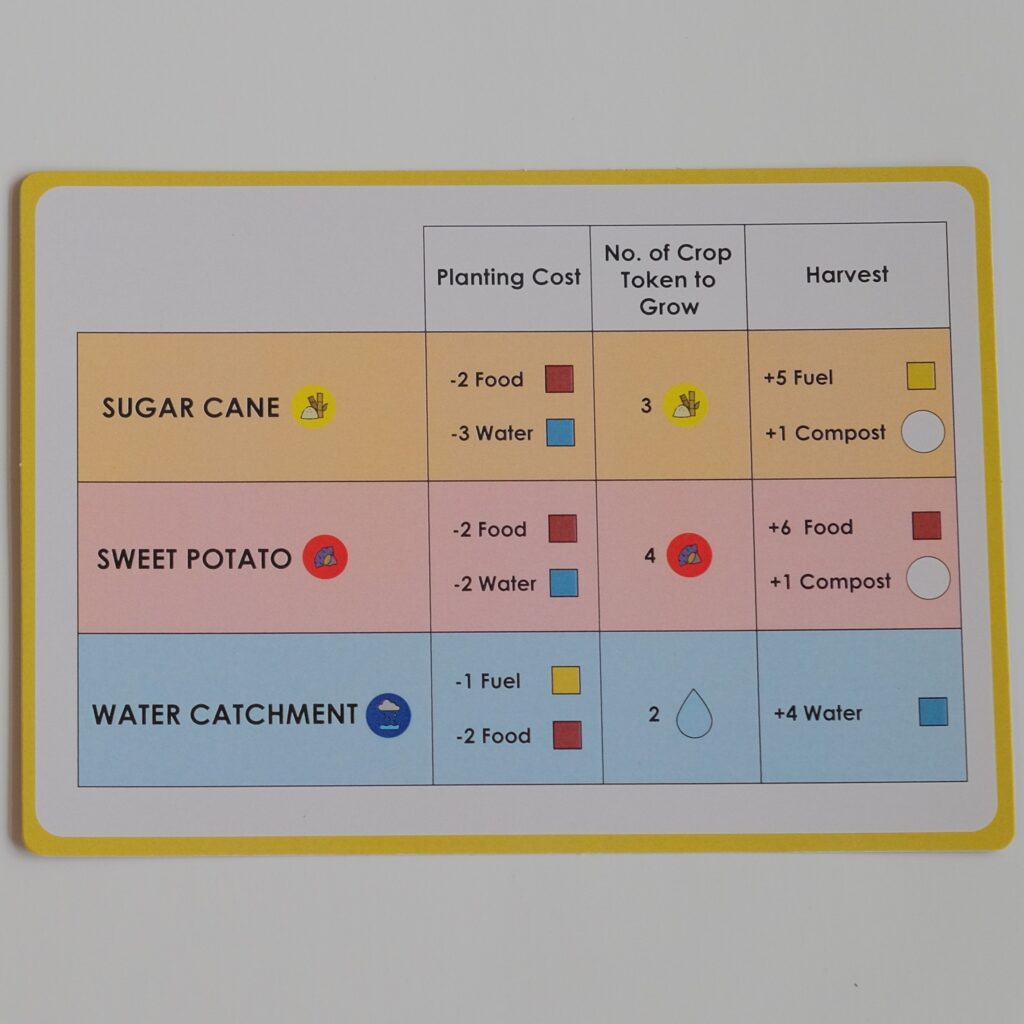
Game Website
Game Website
To help make the game more attractive by increasing the competitiveness between teams in workshops and reducing setup time by providing game instructions to all players on demand, the game website complements the game by enhancing the experience.
